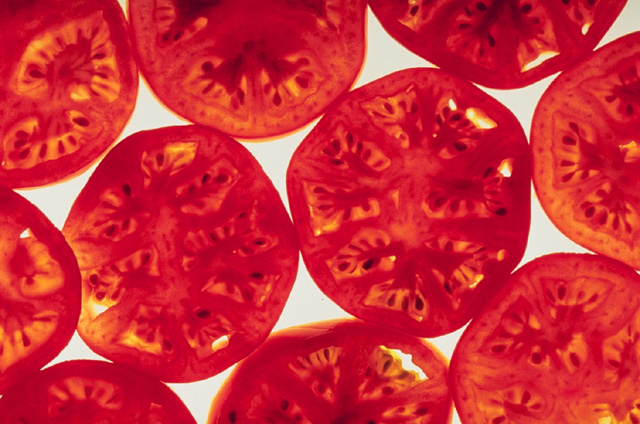
By Contributing Writer: Norma Vega
Every wonder where the first tomatoes originated? These plump fruits (yes, fruits, not vegetables!) grew wild in the Andes region of South America, but it wasn’t until they reached the central region of Mexico that the Aztecs began to cultivate them into the round, fleshy summer edibles we now recognize them to be.
The Aztec word, xitomatl later became the Spanish word, ‘tomate’. According to accounts of Franciscan priests, the Aztecs would mash tomatoes up with chili and squash seeds, so sauces or Mexican salsas are nothing new and have been around for centuries! One of the first tomato imports to Europe was of a yellow variety, and hence, the Italian word pomodoro (pomo: apple, d’oro: of gold) was created. This golden apple, however, was not well received in many parts of Europe. Tomatoes, along with other new food items from the American continent, arrived in Europe in the 1500’s, when an emerging puritanical worldview grabbed a hold of the European psyche. European xenophobia (feeling fearful or contemptuous of foreigners) tainted their perception of items brought to them from ‘heathen lands.’ The tomato, because of its deep reddish hue, was thought to be poisonous and even sinful. Imagine, this fleshy, succulent and curvaceous fruit germinating the seeds of sin in your mind! Ironically, the initial rejection of this new forbidden fruit also incited curiosity as it was thought to be an aphrodisiac.
However, with the passing of time the tomato triumphed in Europe and within a 200 year span it was cultivated all over the globe and was incorporated into local cuisines all over the world. Can one imagine what Greek, Middle Eastern, Indian, and especially Italian modern cuisines would be without this red fruit? In fact, the tomato has also inspired poets to write about it. Pablo Neruda, Chile’s most famous poet, in “Ode to the Tomato” reminds us that because the tomato does not have a ‘defense system’ made up of husks, pits, thorns or hard peels, it is the most generous of fruits, for it is pure pulp, flesh, and juice! So this summer enjoy the pure abundance of this magical orb!
Next morsel of food history… the potato!
Editor’s Note: We want to thank Norma for her contribution. Click on the photo on the right to see the Yellow Tomatoes Stuffed with Grilled Wild Mushrooms and Parmesan Cheese recipe by Rafael Palomino from his Latin Grill cook book. This week we’ll be featuring a number of tomato-inspired recipes.

